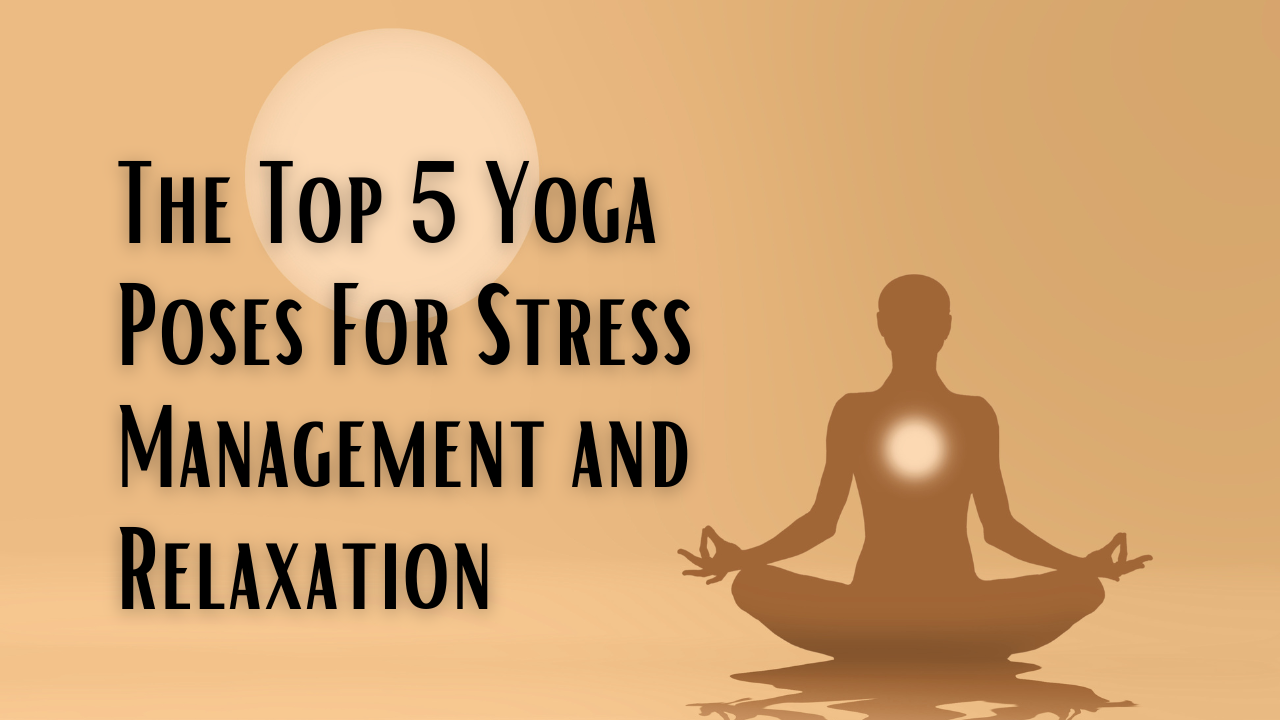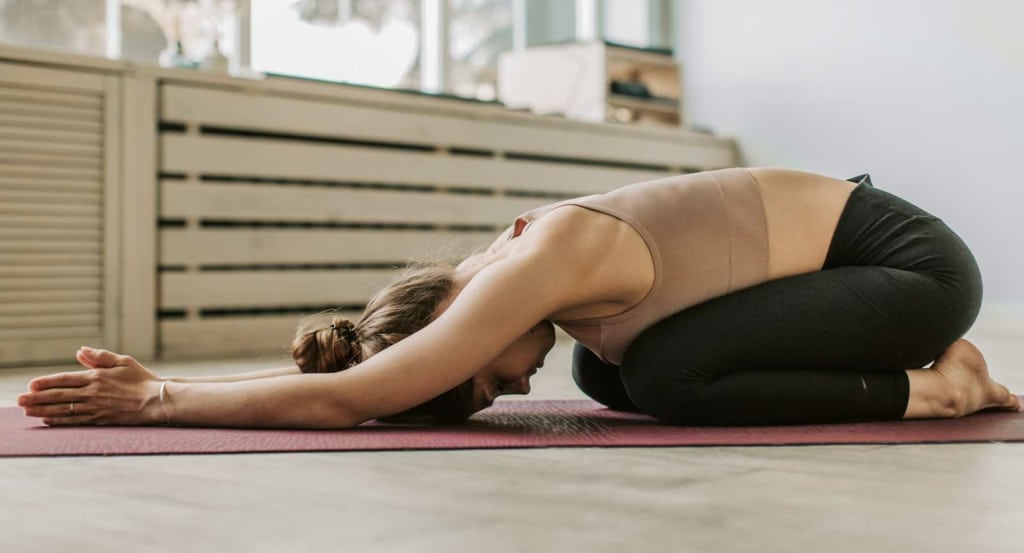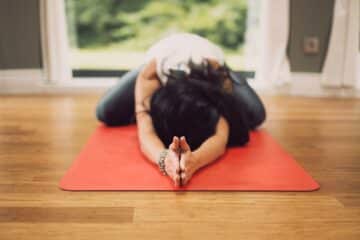Yoga poses can be a highly effective way to alleviate stress and promote relaxation. By incorporating specific yoga poses into your routine, you can achieve a sense of calm and tranquility, relieving tension and calming the mind.
These poses are designed to release physical and mental stress, as well as promote a peaceful state of being. Whether you’re a beginner or an experienced practitioner, incorporating these yoga poses into your daily routine can provide immense relief and relaxation.
We’ll explore some of the best yoga poses for stress relief and relaxation, and discuss how each pose can help soothe your soul and promote overall well-being. So, let’s dive into the world of yoga and discover the incredible benefits it can offer for stress relief and relaxation.

Credit: medium.com
1. Benefits Of Yoga For Stress Relief
Soothe your soul and find relaxation through yoga poses that effectively relieve stress. Experience the benefits of yoga, which include improved mental well-being and reduced anxiety, creating a sense of calm and serenity.
Yoga has been practiced for centuries and is known for its ability to calm the mind and relax the body. It offers numerous physical and mental benefits that can help reduce stress, anxiety, and promote overall well-being. Let’s explore the specific advantages of incorporating yoga into your routine.
1.1 Physical Benefits
Yoga not only provides a mental escape but also offers incredible physical benefits. Here are some ways yoga can help soothe your soul and relieve stress:
- Improved flexibility: Yoga poses gently stretch and lengthen muscles, improving flexibility and range of motion.
- Enhanced strength: Holding yoga poses builds strength in your muscles, contributing to improved overall physical fitness.
- Reduced muscle tension: Deep stretching and relaxation techniques release built-up tension, promoting a sense of calmness.
- Better posture: Consistent practice of yoga can lead to improved posture, reducing the strain on your spine and alleviating back pain.
- Increased energy levels: Yoga poses increase blood flow and oxygen supply throughout the body, resulting in a boost of energy and vitality.
- Improved sleep quality: Practicing yoga before bedtime can help you unwind, relax, and prepare your body for a restful sleep.
1.2 Mental Benefits
Yoga not only nurtures the physical body but also has profound effects on mental well-being. Here are some of the mental benefits of incorporating yoga into your stress-relief routine:
- Stress reduction: The combination of deep breathing, mindfulness, and gentle movements in yoga can significantly reduce stress levels.
- Increased mindfulness: Practicing yoga cultivates mindfulness, allowing you to be fully present in the moment and letting go of worries and distractions.
- Improved mental clarity: Yoga helps to calm and quieten the mind, leading to improved focus, concentration, and mental clarity.
- Enhanced mood: Regular yoga practice promotes the release of endorphins, improving mood and reducing symptoms of depression or anxiety.
- Better self-awareness: Yoga encourages self-reflection and self-acceptance, helping you develop a deeper understanding and connection with yourself.
- Emotional balance: Yoga practices like meditation and deep breathing help regulate emotions, enabling you to respond to stressful situations in a more balanced way.
When it comes to stress relief, yoga is a powerful and accessible practice that offers a multitude of benefits for both the body and the mind. By incorporating gentle movements, deep breathing, and mindfulness, yoga can help you find inner peace and relaxation. So, why not unroll your yoga mat and embark on a journey of self-care and stress reduction today?

Credit: www.castlehotsprings.com
2. Yoga Poses For Stress Relief
When it comes to relieving stress, yoga can be a powerful and effective tool. The practice of yoga involves various poses that help release tension, calm the mind, and alleviate stress. In this section, we will explore several yoga poses specifically designed to provide stress relief and promote relaxation.
2.1 Child’s Pose (balasana)
One of the most comforting and soothing poses in yoga for stress relief is the Child’s Pose, also known as Balasana. This gentle, resting pose helps release tension in the back, shoulders, and chest. To practice this pose, kneel on the floor, sit back on your heels, and then fold your body forward, extending your arms in front of you. Take deep breaths in this position, focusing on releasing any pent-up stress or anxiety.
2.2 Cat-cow Stretch (marjaryasana-bitilasana)
The Cat-Cow Stretch, known as Marjaryasana-Bitilasana in Sanskrit, is a dynamic combination of two poses that helps to relieve stress and tension in the spine, while also promoting flexibility and circulation. Start on your hands and knees, and alternate between arching your back like a cat and then dropping your belly towards the ground like a cow. This fluid movement is not only beneficial for stress relief but also helps to center the mind and focus on the breath.
2.3 Downward-facing Dog (adho Mukha Svanasana)
Downward-Facing Dog, or Adho Mukha Svanasana, is a well-known yoga pose that not only stretches the entire body but also helps to calm the mind and reduce stress. This pose involves starting on your hands and knees, then lifting your hips towards the ceiling, creating an inverted V-shape with your body. As you breathe deeply in this pose, you’ll feel a sense of grounding and relaxation, making it an effective tool for stress relief.
3. Yoga Poses For Relaxation
When life becomes overwhelming, it’s essential to find ways to relax and destress. These yoga poses for relaxation can help soothe your mind and body, promoting a sense of calm and peacefulness.
3.1 Corpse Pose (savasana)
Corpse pose, also known as Savasana, is a deeply relaxing posture that allows you to release tension and enter a state of complete relaxation. Lie on your back, close your eyes, and focus on deep, mindful breathing. This pose helps quiet the mind and rejuvenate the body, promoting a sense of inner peace and tranquility.
3.2 Legs-up-the-wall Pose (viparita Karani)
Viparita Karani, or legs-up-the-wall pose, is a restorative posture that helps calm the nervous system and reduce stress. Lie on your back with your legs extended up against a wall, allowing gravity to gently stretch and relax your lower body. This pose promotes blood circulation and can alleviate fatigue, making it an excellent choice for unwinding after a long day.
3.3 Seated Forward Bend (paschimottanasana)
Paschimottanasana, the seated forward bend, is a soothing yoga pose that stretches the spine and hamstrings while calming the mind. Sit with your legs extended in front of you, then fold forward from the hips, reaching for your feet. This gentle forward bend releases tension in the back and neck, promoting a sense of tranquility and relaxation.
4. Breathing Techniques For Stress Relief
When it comes to managing stress and finding relaxation, incorporating specific breathing techniques into your yoga practice can be incredibly beneficial. Proper breathing techniques help calm the mind, reduce anxiety, and release tension from the body. In this article, we will explore two powerful breathing techniques that can soothe your soul and bring a sense of tranquility and balance.
4.1 Deep Belly Breathing
Deep belly breathing, also known as diaphragmatic breathing, is a simple yet effective breathing technique that promotes relaxation and stress relief. It involves consciously breathing deeply into the belly instead of shallowly into the chest.
To practice deep belly breathing:
- Sit or lie down in a comfortable position, ensuring your spine is straight.
- Place one hand on your chest and the other on your belly.
- Take a slow, deep breath in through your nose, allowing your belly to fill with air.
- Exhale slowly through your mouth, feeling your belly deflate.
- Repeat this breathing pattern several times, focusing on the sensation of your belly rising and falling with each breath.
Deep belly breathing promotes a state of relaxation by activating the body’s parasympathetic nervous system, which counteracts the stress response. Make deep belly breathing a part of your daily routine to experience its incredible stress-relieving benefits.
4.2 Alternate Nostril Breathing (nadi Shodhana)
Alternate nostril breathing, also known as Nadi Shodhana, is a yogic breathing technique that helps balance the left and right hemispheres of the brain while calming the mind and reducing stress levels.
To practice alternate nostril breathing:
- Sit comfortably in a cross-legged position with your spine erect.
- Place your left hand on your left knee, palm facing upward, or adopt a mudra of your choice.
- Bring your right hand up towards your face and fold your index and middle fingers toward your palm.
- Place your thumb on your right nostril and gently close it.
- Inhale deeply through your left nostril.
- Release your thumb and close your left nostril with your ring finger.
- Exhale completely through your right nostril.
- Inhale through your right nostril.
- Close your right nostril with your thumb.
- Exhale through your left nostril.
- Repeat this cycle for several rounds, focusing on the smoothness and balance of your breath.
Alternate nostril breathing helps quiet the mind, enhance concentration, and restore a sense of inner calm. Practice it whenever you feel stressed or overwhelmed to experience its calming effects.
5. Tips For Incorporating Yoga Into Your Daily Routine
Discover five invaluable tips to seamlessly incorporate yoga into your daily routine and find solace for your soul. These soothing yoga poses will help alleviate stress and promote relaxation, allowing you to experience a renewed sense of calm and well-being.
When it comes to managing daily stress, incorporating yoga into your routine can make a significant difference. By dedicating a few minutes each day to practice calming yoga poses, you can experience relief and relaxation like never before. To help you get started on your yoga journey, here are five simple tips to seamlessly incorporate yoga into your daily routine.
5.1 Start With Short Sessions
If you’re new to yoga or have a busy schedule, starting with short yoga sessions is ideal. By scheduling just 10 to 15 minutes per day for yoga, you can gradually build the habit and reap the benefits of regular practice. These bite-sized sessions will enable you to focus on specific stretches and poses, allowing you to gradually increase your flexibility and improve your mental well-being.
5.2 Find A Quiet Space
Creating a calm and serene environment is essential for a successful yoga practice. Find a quiet space in your home where you can immerse yourself in the practice without distractions. Whether it’s a spare room, a corner in your bedroom, or even a spot in your backyard, choose a location where you feel comfortable and can easily concentrate. Eliminating external noises and disturbances will optimize your ability to unwind and find inner peace.
5.3 Use Props For Support
Props are a valuable addition to your yoga practice, providing support and assisting with proper alignment. Whether it’s a yoga block, bolster, strap, or blanket, incorporating props can make certain poses more accessible and help prevent injuries. They can be particularly beneficial if you’re a beginner or dealing with physical limitations. Utilize these props to modify poses as needed and enhance your overall yoga experience.

Credit: yogauonline.com
Frequently Asked Questions For Soothe Your Soul: Yoga Poses For Stress Relief And Relaxation
What Are Some Yoga Poses For Stress Relief And Relaxation?
Yoga poses such as child’s pose, cat-cow, and forward fold can help to calm the mind, release tension, and promote relaxation. These poses gently stretch the body, allowing for deep breathing and increased blood circulation, which aids in stress relief.
How Often Should I Practice These Yoga Poses?
For optimal stress relief and relaxation, it is recommended to practice these yoga poses at least 3 times a week. However, even practicing once a week can bring some benefits. Find a routine that works best for you and listen to your body’s needs.
Can Yoga Really Help In Reducing Stress Levels?
Yes, absolutely! Yoga has been shown to reduce stress levels by activating the body’s relaxation response. By practicing mindful movement, deep breathing, and meditation, yoga helps to release tension, calm the mind, and regulate the body’s stress hormone levels. Regular yoga practice can bring long-term stress relief.
What If I Am A Beginner And Have Never Done Yoga Before?
No worries! These yoga poses for stress relief and relaxation are beginner-friendly. Take your time, listen to your body, and go at your own pace. If needed, use props like blocks or blankets to support your practice. Remember, the goal is to find peace and calmness within yourself.
Conclusion
Incorporating these stress-relieving yoga poses into your daily routine can bring a sense of calm and relaxation to your hectic lifestyle. By focusing on your breath and movement, you create a harmonious balance between your mind and body. So go ahead, try these poses and let the soothing power of yoga wash away your stress and restore your inner peace.
Start your journey towards a more tranquil and centered self today.



